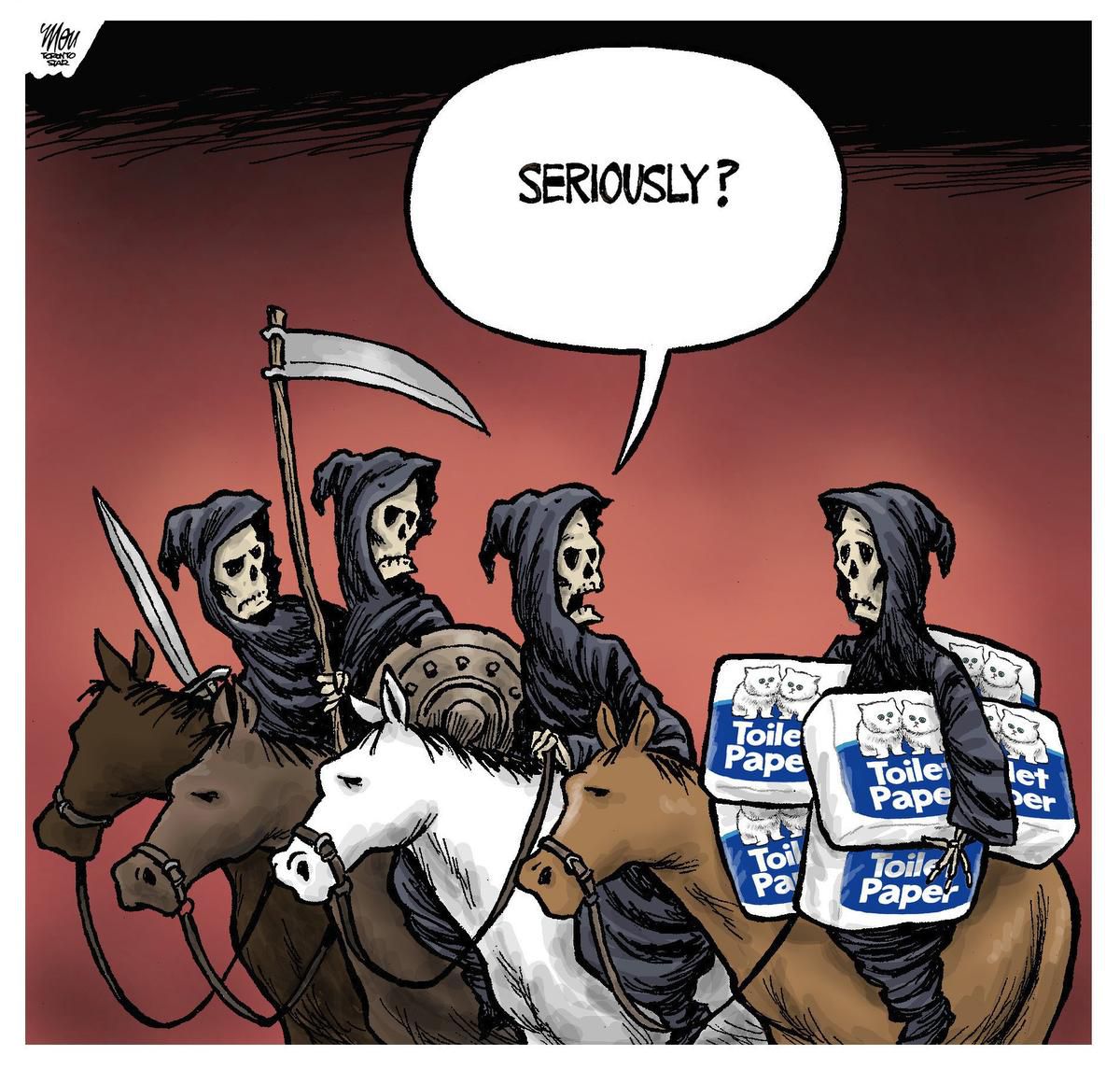Our Uncertain Future Blog – All Posts
We live in interesting times, with news items from around the world, and around our own country, of frequent ‘natural’ disasters, particularly flooding and wildfires. Then when it seems like we’re getting respite along comes the Coronavirus pandemic.
For many people this is the first time they’ve had these events impact on their own lives, and naturally it has come as a shock. One of the immediate reactions when we feel threatened is to react out of fear. Particularly when our health is threatened it is natural to experience a ‘flight or fight’ reaction and to become stressed.
Such feelings can only be reduced by action, and a natural reaction is to want to stockpile. We become very conscious of our mortality so we get comfort from buying food and, because of the risk to our health, also buying cleaning products and even toilet rolls.
Given these feelings are natural we should not criticise people for stockpiling, it is a perfectly rational response to the circumstances. Furthermore, the Government’s advice (in the UK at least) is that if you live with someone who has symptoms, you’ll need to self-isolate for 14 days from the day their symptoms started. Clearly it makes sense for most families to get in enough food to last that family for a minimum of 2 weeks, something they probably hadn’t considered before.
Of course, there are right and wrong ways to stockpile. When stocking up there is no excuse for taking more than you need of anything, nor to buy more perishable food than you are likely to use – throwing away uneaten food is even more objectionable when food is short. In my experience those shops that have brought in reasonable restrictions, such as a limit of 2 of each item per customer, have been able to keep well stocked and still everyone has been able to get enough of what they need (even if it’s not as much as they want).
The best way and time to stockpile, however, is when there are no shortages. That might sound contradictory but only because we’ve all become complacent that there will always be what we need in the shops. The current situation clearly shows that assumption is false, with our super efficient ‘just in time’ food distribution system being very fragile.
We should all keep enough stock in our homes to sustain our families for a reasonable amount of time. It’s not a new idea, it’s what our parents and grandparents did automatically with their pantries and larders, and they would be shocked to see how blasé we have become. Readily available food cannot be taken for granted.
I believe that we should all individually hold enough food to sustain ourselves for a given period, and if we are parents then that should cover our children too. So how long should that period be?
In the US the Federal Emergency Management Agency has recommended for decades that every household should assemble a disaster supplies kit that contains a three-day supply of water and nonperishable food. The long standing UK Government advice is similar (‘Bottled water, ready-to-eat food and a bottle/tin opener, in case you have to remain in your home for several days’) though it seems to be much less publicised.
In the context of a pandemic and its associated self-isolation, of course, we now know that 3 days is not enough and that 14 days is more appropriate. In fact, this is a minimum as the Government states that someone who gets symptoms in a household that is already isolating needs to stay at home for 7 days from when their symptoms appeared, regardless of what day they are on in the original 14 day isolation period, so we’re actually looking at a minimum 3 week period (extended by a further 7 days for each new member that gets infected). For simplicity it makes sense just to aim for a 1 month supply. If you don’t know what that looks like there are various resources online to help (here’s an example).
Once you have created a 1 month stockpile you can decide if you want to take it further – it depends on your own personal desire for security and comfort. For many people that will be 3 months or 6 months – such stockpiles are not uncommon in the US, particularly. This may be related to the US homesteading culture that I touched on in my first blog post. Personally I am aiming to eventually get to one year, but that is definitely getting into serious ‘prepper‘ territory and won’t suit most people.
Whether you decide to go for long term storage or just keep enough in hand to cover one month, as you would need for the next virus outbreak, the important thing is to not get complacent. Note what happened this time and what you learned – particularly what you had plenty of, and what you couldn’t get that you needed. When things return to some kind of normality don’t run down your stockpile, keep it going. It costs the same in either case since you’re just replacing what you use, but you’re also keeping a buffer. Use what’s at the front of your stock and put the new bought items in the back, just as our grandparents did (and as they do when restocking in the shops). It then just becomes a habit.
This approach will save you money, because you have somewhere to store spares when the opportunity comes up to buy in bulk. You get peace of mind knowing it’s there. And it’s simply ready for when you need it next time.
Our Uncertain Future Blog – All Posts
See here for a guide about guarding mental health during the COVID-19 pandemic.





